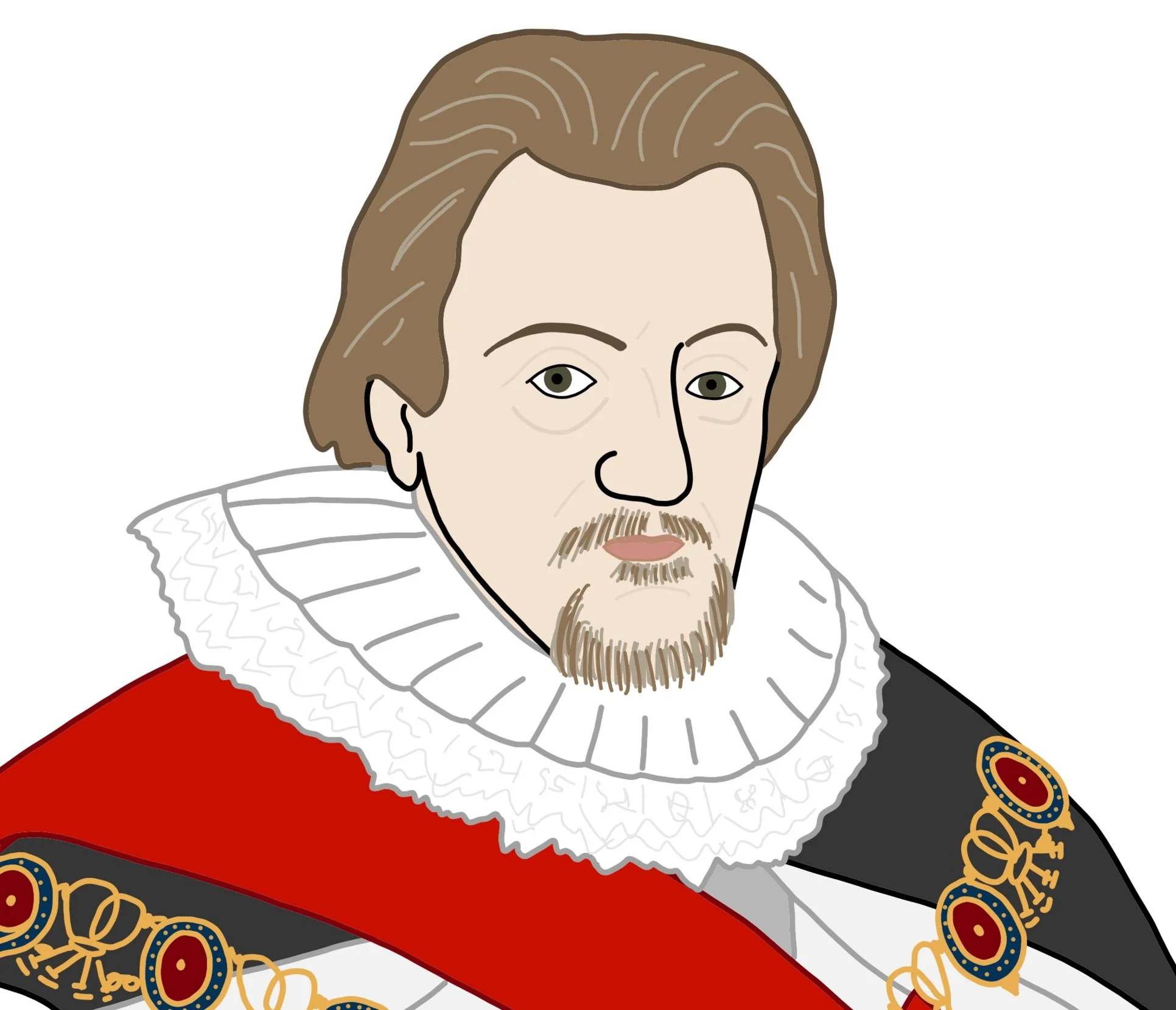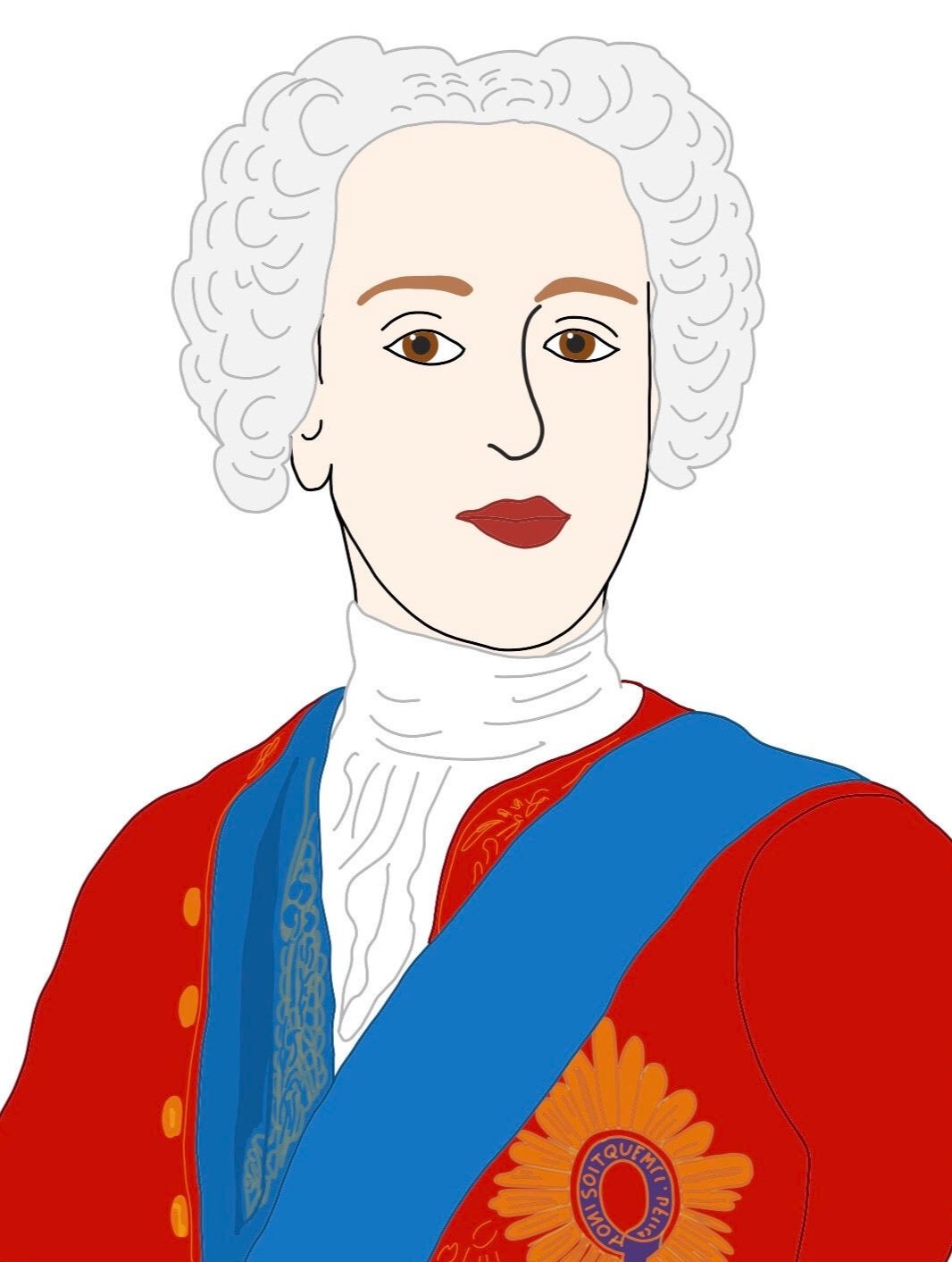September 12th - 18th
“Submarines; tanks; third time lucky for the Mayflower; but most notably the week we lost eleven days…”
On 12th September…
King James VI & I goes under the Thames onboard the first submarine
1624 - The first submarine was demonstrated in London on the River Thames in front of a crowd of about 3,000 spectators. King James VI and I was one of the first passengers invited along for the ride in the submarine. The submarine had been designed by Cornelis Drebbel, a Dutch inventor. It was made of a wooden frame covered in pigskin and capable of carrying 16 passengers.
On 13th September…
1916 - Roald Dahl, the famous children’s author, was born in Cardiff, Wales. Some of his books include, Charlie and the Chocolate Factory, James and the Giant Peach, Matilda, and The BFG.
1940 - Buckingham Palace was hit by five bombs during a German air raid on London in World War II. The bombs fell on the Royal chapel, the inner quadrangle, the Palace gates and the Victoria memorial. Four members of the palace staff were injured and one of them died a short while after.
On 14th September…
1752 - The Gregorian Calendar was introduced into Britain. At the time Britain was using the Julian calendar whilst all Roman Catholic countries had adopted the Gregorian calendar back in the 1582; Britain was now eleven days ahead of the countries using the new calendar. This meant that when Britain adopted the new calendar 3rd September became 14th September to bring the nation in line with the new system. People across Britain weren’t happy about this change and some rioted on the streets demanding, “Give us back our 11 days!” Of course, they hadn’t lost any days, but it did seem like that, how would you feel if your birthday was on the 3rd-13th September that year?
The Julian calendar was put to use by Julius Caesar who decreed that there should be three years of 365 days followed by a year of 366 days, what we call a leap year. How is this different to the calendar we use now? The Gregorian calendar, brought into use by Pope Gregory XIII, has an additional rule to keep the dates in line with the way the world moves around the sun. The extra leap year day is not to be added to any year divisible by 100 but not divisible by 400, e.g., 1900, 1800 and 1700 were not leap years but 1600 and 2000 were.
On 15th September…
George Stephenson’s Manchester Liverpool railway opens
1830 - The Manchester and Liverpool Railway, designed and built by George Stephenson, was opened. It was the first inter-city railway designed to transport both passengers and goods between Manchester and Liverpool. During the opening ceremony William Huskisson an MP was fatally wounded whilst crossing the track to shake hands with the Prime Minister, the Duke of Wellington. He was the first person to be killed by a train.
1859 - Isambard Kingdom Brunel died of a stroke. He was a famous Victorian engineer who designed many bridges, tunnels and railways including the Great Western Railway and the Clifton Suspension Bridge. He also designed the first iron steamship, the SS Great Britain.
1890 - Agatha Christie the famous English crime writer was born in Torquay, Devon. She wrote 66 detective novels and 14 short story collections as well as over 30 plays. Her books have been translated into over 100 languages and have sold over 2 billion books (yes, over 2 billion - 2,000,000,000 - only the Bible and Shakespeare have sold more). Two of her best loved characters are the detectives Hercule Poirot and Miss Marple.
1916 - Tanks were first used by the British Army in warfare at the Battle of Flers-Courcelette during World War I. The first tanks were very slow and unreliable; of the 49 deployed for use only 25 actually moved forward at the start of the attack.
1984 - Prince Harry was born in London. He is the youngest son of King Charles III and is currently 5th in line to the throne.
On 16th September…
Henry V is born
1386 or 87 - King Henry V was born in Monmouth, Wales. He became king when he was 25 years old when his father King Henry IV died. Henry V is best known for defeating the French at the Battle of Agincourt.
Did you know that when he was 16 years old he was hit in the face by an arrow which lodged itself 6 inches (15cm) into his skull and had to be removed by surgeons on the battlefield? They made special tongs to remove the arrowhead from the young warrior prince without the use of an anaesthetic. The wound left an ugly scar which is why the King’s portraits are all of his profile.
1400 - Owain Glyndwr began a Welsh revolt against the rule of King Henry IV of England. He was declared Prince of Wales by his followers and was the last native Welshman to hold the title. He re-conquered and ruled Wales for several years before the English regained control. Not much is known of Owain Glyndwr after 1412 but he remains a Welsh national hero.
1620 - The Mayflower set sail for a third time bound for America with 102 pilgrims on board, this time they were successful and continued on their journey without having to return to port. This year marks the 400th anniversary of their journey to America where they planned to establish the first permanent colony. The pilgrims were seeking religious freedom and a fresh start in a country where they would be able to worship God without the persecution of the Church of England; religion was a strict business in the times of the Tudor and Stuart monarchies, and you could be executed for not following the same religion as the king or queen. The Mayflower had originally been accompanied by the Speedwell, but disaster and damage had struck the Speedwell twice after setting out on their journey. This third time the Mayflower set off for America alone, carrying all passengers and cargo that had been originally shared between the two ships. This made the ship a lot heavier and slower than before and their journey across the Atlantic took them a lot longer than anticipated; they arrived during a cold harsh winter.
King James VII & II dies in exile
1701 - King James VII & II died whilst in exile in France. He had become King of England and Scotland on the death of his brother King Charles II but because of his strong Catholic beliefs the English Protestant government asked his daughter Mary and her husband William to take the throne from him. King James VII & II fled to France after his army also turned against him in favour of William and Mary. His son James Francis Edward Stuart became the Jacobite claimant to the thrones of England and Scotland.
1736 - Daniel Gabriel Fahrenheit died. He was a Polish-born Dutch scientist who is best known for inventing the thermometer and the Fahrenheit temperature scale.
On 17th September…
Bonnie Prince Charlie arrives in Edinburgh
1745 - Bonnie Prince Charlie arrived in Edinburgh to cheering crowds and declared his father to be the rightful King of Scotland. His father was James Francis Edward Stuart, son of the deposed King James VII & II. Unable to capture Edinburgh Castle Bonnie Prince Charlie set up his court at the Palace of Holyroodhouse. His supporters were called Jacobites after Jacobus, the Latin name for James.
Harriet Tubman escapes slavery
1849 - Harriet Tubman escaped from slavery in America with two of her brothers. After her escape she helped others gain their freedom through the Underground Railroad which was a system of safe houses across America that helped slaves escape to freedom. Harriet went on to become a leading abolitionist fighting against slavery and a spy for the Union Army during the American Civil War.
1877 - William Henry Fox Talbot the English pioneering photographer died. He discovered that by using light sensitive paper instead of bitumen or copper-paper he could produce better quality images. Fox-Talbot went on to develop the three primary stages of photography: developing, fixing and printing. He made the earliest known surviving photograph at his home in Lacock Abbey, Wiltshire.
On 18th September…
1914 - The Government of Ireland Act 1914 was given royal approval. This Act, also known as the Home Rule Bill, would give Ireland self-government. The Act was suspended for a year because of the outbreak of World War I. Further developments in Ireland led to a postponement of the Act and it eventually never came into force. In 1922 instead of Home Rule being introduced, Ireland was divided into two: the south became a democratic republic whilst the north remained a part of the United Kingdom.





